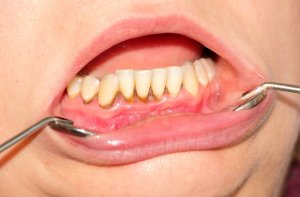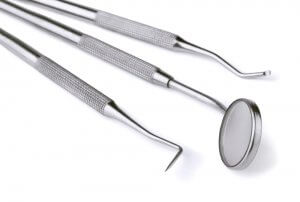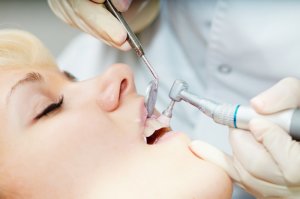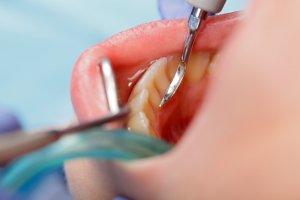What is a scale and polish? Simply put, it’s a professional teeth cleaning with a dentist or hygienist which removes tartar from teeth to combat gum disease and tooth decay. It’s a common dental procedure, but if you’ve never had one before, the idea of teeth descaling can be daunting.
If you have questions about teeth scaling and polishing or want to know how to remove tartar from teeth without visiting a dentist, you’re in the right place. In this article you’ll find information on:
- Scale and polish costs, including on the NHS
- Tartar removal procedure, duration and what to expect
- How to make a hygienist appointment
- Whether it’s possible to remove tartar at home
- How to avoid tartar buildup on your teeth in the future
We hope this helps you make more informed choices about your dental care for better oral hygiene in the future.
In This Article
What is tartar?
Dental tartar, or calculus, forms when dental plaque is left to harden. Plaque builds up on your teeth throughout the day, and if not cleaned away, it soon solidifies to tartar. Tartar contains a mixture of calcium compounds, bacteria, and other organic matter naturally present in the mouth.

Unlike plaque, which is almost invisible, tartar is quite easy to spot. It ranges in colour from white and yellow to brown and black, usually darkening the longer it remains. Tartar usually first accumulates around the gums and between teeth – the places that are hardest to clean properly.
Over time, tartar not removed from teeth can cause numerous problems including:
- Cavities
- Bad breath
- Gum disease
- Gum recession
- Teeth becoming loose or falling out
Not to mention, it’s pretty unpleasant to look at.
Because our teeth are uneven shapes and it’s hard to clean between them really well, some degree of tartar buildup is to be expected. However, with regular dental checkups your dentist can keep an eye on the condition of your teeth and recommend a scale and polish for tartar removal, if required.
Tartar removal
Calculus bonds very strongly to tooth enamel, so you can’t just scrape it off using your finger. Whereas brushing and flossing properly should remove most of the sticky plaque from your teeth, tartar removal requires special dental tools.
If your dentist or hygienist notices tartar on your teeth, they will conduct a professional teeth cleaning procedure called a scale and polish – more on that in a moment.
However, if you’re one of those people who wants to avoid visiting the dentists at all costs, you might be wondering how to remove calculus from teeth without going to the dentist. Are there ways to do it yourself?
How to remove tartar at home, without a dentist

The short answer is, don’t try to conduct your own dental scale and polish at home.
As you’ll see below, dentists and hygienists use a range of specialist tools to get rid of tartar on teeth. Although you can buy tartar removal tools online, just like dental professionals use for teeth scaling, there is a big risk of damaging the teeth and gums if these tools are used without the proper training. It’s also very hard to see inside your own mouth in the same way that a dentist can, to check that all the tartar buildup is removed.
Natural ways to remove tartar at home
But are there any natural ways to carry out tartar removal at home? Can you remove tartar from teeth with baking soda, activated charcoal powder or other natural products?
Unfortunately for those hoping to remove tartar from teeth without a dentist, the answer is again ‘no’. There are lots of natural ways to remove plaque – you could try making your own natural toothpaste, for example – but once tartar has accumulated, the only safe way to properly remove it is with professional teeth cleaning at the dentist.
So, let’s look at exactly what’s involved with tooth scaling and polishing.
What is a scale and polish?
A scale and polish is a standard cleaning procedure. There are two parts to this common tartar removal procedure, which may be carried out by a dentist or hygienist.
- Teeth scaling: The first task is to clean the teeth and remove any stubborn tartar by scraping it away. Various tartar removal tools are used for descaling teeth, which we describe in more detail below.
- Teeth polishing: Once the teeth are clean, they are polished to make the surface really smooth. Not only does this improve the cosmetic appearance of the teeth; it also removes rough patches which are more susceptible to plaque buildup.
Depending on the state of your oral health, your dentist will either refer you for a scale and polish as and when needed, or will recommend a regular teeth cleaning (usually once or twice a year, or more often if you have poor gum health).
After the tooth surface has been completely cleaned above and below the gum line, the root of the tooth undergoes a process called planing. This is a process of smoothing the root of the tooth so that any remaining tartar is removed.
It clears away any rough areas that bacteria below the gum line thrive in. And, it makes it much easier for the gum tissue to re-attach itself to the tooth, reducing the size of the pockets that the plaque and bacteria hide in.
Scaling occurs above or below the gum line and involves the scraping and removal of plaque and calculus (tartar) from the tooth. At regular teeth cleanings, it’s usually only the crown of the tooth that is treated.
However, in more extreme circumstances, it is necessary to go further below the gum line to thoroughly remove disease-causing bacteria and its by-products on the root surface. The goal of root planing and scaling is to prevent or treat gum disease and to keep your mouth as healthy as it can be.
Dr. Angela Evanson, Angela Evanson DDS
Now let’s look in detail at what a dentist or hygienist does during a scale and polish dental cleaning.
Dental cleaning procedure

To begin a scale and polish, dentists normally use an electric scaling instrument, sometimes called an ultrasonic scaler, or ultrasonic tooth cleaner. This vibrates at high speeds to loosen tartar on the teeth. It also sprays water to wash the debris away, so you might be asked to spit from time to time.
Once the electronic scaler has removed larger pieces of tartar, the dentist will use hand scaling tools in a variety of shapes and sizes. They scrape away any remaining tartar, with the different shaped tools making it possible to reach between the teeth and into gum pockets.
Any newly exposed areas of tooth enamel can be quite rough, but the final polish takes care of this. The dental polishing tool looks a bit like a rotating electric toothbrush head, and the dentist might use a special toothpaste to finish the dental cleaning.
Heavy tartar removal
If you haven’t taken the best care of your teeth and have avoided the dentist for years, you may have quite heavy tartar buildup. In extreme cases, tartar can spread to the point where it completely covers the teeth (here is one example, if you’re interested). Even if heavy tartar removal is required, it’s possible to save the teeth underneath once a dental deep cleaning is complete.
The process is much the same as described above, but will take longer the more calculus has built up.
The video below shows how dental tools are used to remove tartar from teeth, even when it’s been there a while.
How long does a scale and polish take?
This depends. A routine scale and polish for someone who has generally good oral hygiene might take around 15-30 minutes, with the entire hygienist appointment lasting 30-45 minutes.
When more extensive tartar removal is required, it can take a lot longer – even hours – and may be spread over more than one appointment. Patients who are nervous about the procedure can request for it to be done under IV sedation. With this, the patient is awake throughout but very relaxed, and won’t remember much of the experience. However, IV sedation usually has to be paid for privately.
Does a scale and polish hurt?
It can be uncomfortable having stubborn tartar scraped from your teeth, but it shouldn’t be painful if you have done a good job of removing plaque by cleaning your teeth daily.
If, however, calculus has built up around your gums and below the gumline, a visit to the hygienist might hurt a little. This is partly because of the effort required to scrape tartar away, and partly because the gums underneath will be sore anyway. Your dentist might apply an anaesthetic gel to your gums to help with the pain, or may even use a local anaesthetic if the procedure is going to be quite invasive.
After a scale and polish you might experience some tooth sensitivity while your teeth adjust to being fully exposed again. It can take several weeks for gums to heal after a deep teeth cleaning, but they shouldn’t be painful for more than a couple of days.
Does a scale and polish whiten your teeth?
Dental scaling and polishing removes surface stains from teeth, so it can make them appear brighter and whiter even though there is no teeth whitening involved. You should also notice that they feel much cleaner.
Scale and polish before and after

This image shows teeth before and after a scale and polish with a hygienist. As you can see, a lot of tartar buildup has been removed and the teeth have a brighter appearance after a dental scaling and polishing.
However, the gums which were covered with calculus have become red and inflamed, so this patient will experience some soreness while the gums recover.
What else to expect at a dental hygienist appointment
A hygienist appointment isn’t just about removing tartar from your teeth. Dental hygienists will also check your general oral hygiene and show you the best way to clean your teeth, as well as addressing any concerns you have.
They may finish by applying a fluoride varnish to protect your teeth, as the video below explains.
What does a scale and polish cost?
Scale and polish costs vary depending on whether you’re getting a private or NHS teeth cleaning. The procedure may also cost more if extensive dental scaling is needed.
NHS hygienist cost
If your NHS dentist identifies the need for professional teeth cleaning, you can get your scale and polish on the NHS. NHS dental hygienist charges can come under the Band 1 or Band 2 treatment charge.
Usually, a straightforward NHS scale and polish costs the Band 1 treatment fee. However, more extensive treatment for gum problems (including deep scaling) come under Band 2.
If you want to get a dental scale and polish even though your dentist doesn’t think it’s medically necessary, you will need to pay for it privately. This is the case even if you see your usual NHS dental hygienist for the procedure – many clinics carry out both NHS and private dental work.
Private dental hygienist cost

A basic scale and polish with a private dental hygienist costs between £25 and £60, but expect hygienist prices to be higher for more advanced or complex treatments. Some hygienists offer stain removal treatments, for example. Periodontal cleaning might be charged per quadrant, meaning you only pay for it in the areas where it’s needed.
Some dental insurance policies and private dental plans include preventative care like teeth cleaning as standard. This can be a helpful way to spread the cost of basic dental care if you know you’ll need regular hygiene appointments.
How to make a hygienist appointment
First of all, check with your dentist how often you should receive a scale and polish. You don’t necessarily need to visit a hygienist as often as you get regular checkups, unless you have particular oral health problems that need special attention.
Research from Cochrane studied adults with healthy gums who got a scale and polish every six months, every 12 months, and not at all over a period of three years. The conclusion was that there was almost no difference in bleeding gums (one of the signs of gum disease) between the three groups, suggesting that there is little benefit to routine scaling and polishing. However, this study didn’t include adults who already had bleeding gums or some other sign of gum disease, so this doesn’t negate the need to get checked regularly.
If you wish to visit an NHS hygienist, you will need to be referred by your NHS dentist during a checkup. For private treatment, you can often book a hygienist appointment directly without any referral.
Preventing tartar buildup with teeth cleaning at home
The best way to avoid painful tartar removal is to prevent tartar buildup in the first place. Following a thorough daily oral hygiene routine will help keep your teeth free from plaque, the biofilm which turns into tartar if it’s left for long enough. We recommend you read our guide to brushing teeth for full details, but here are some basic steps you can take:
- Brush for at least two minutes, twice a day – one of those times being before bedtime
- Use a manual or electric toothbrush with soft bristles
- Hold the brush at a 45 degree angle so the bristles reach below the gumline
- Take care to brush all surfaces of each tooth
- Clean between teeth with dental floss or a water flosser
- Spit but don’t rinse straight after brushing – the ingredients in your toothpaste need to stay on your teeth for a while.
Even taking this special care to keep your teeth clean, tartar can still build up in hard-to-reach places. It’s important to have regular dental checkups so your dentist can check the condition of your teeth and refer you for a scale and polish to remove tartar, if necessary.
Cochrane UK: Scale and polish? Shining a light on routine dental care. Consulted 2nd September 2019.
NHS: What’s available on the NHS? Consulted 4th September 2019.
Oral Health Foundation: Preventive care and oral hygiene. Consulted 4th September 2019.





